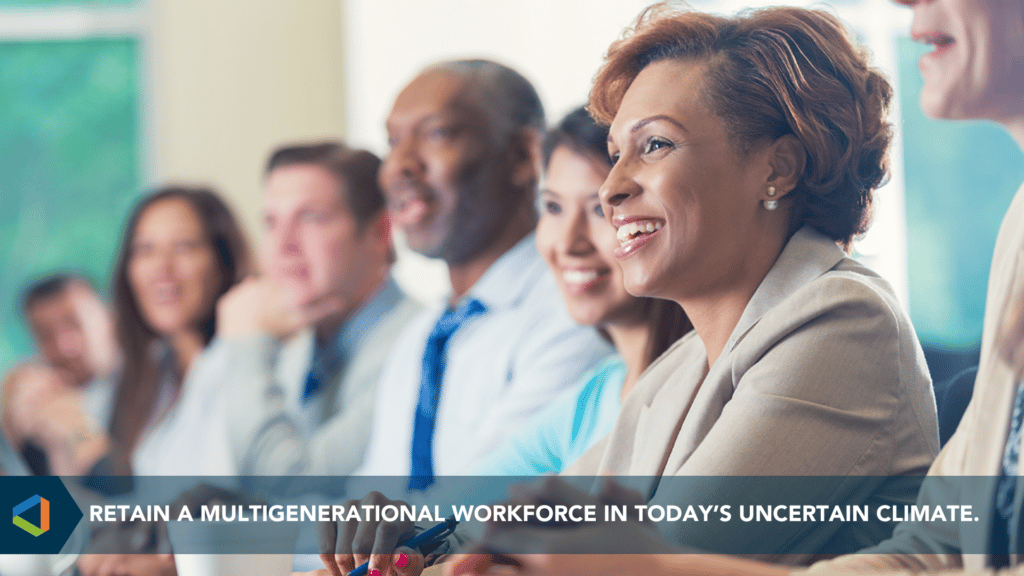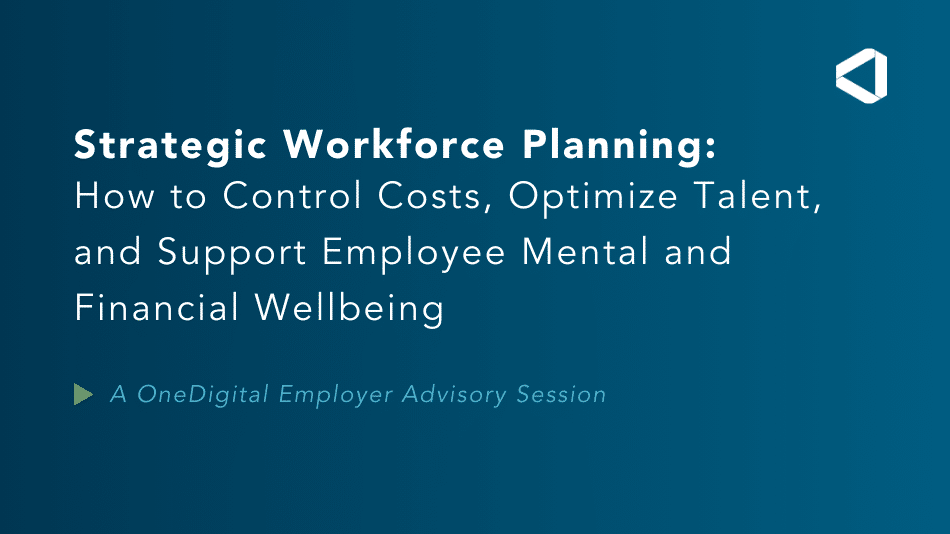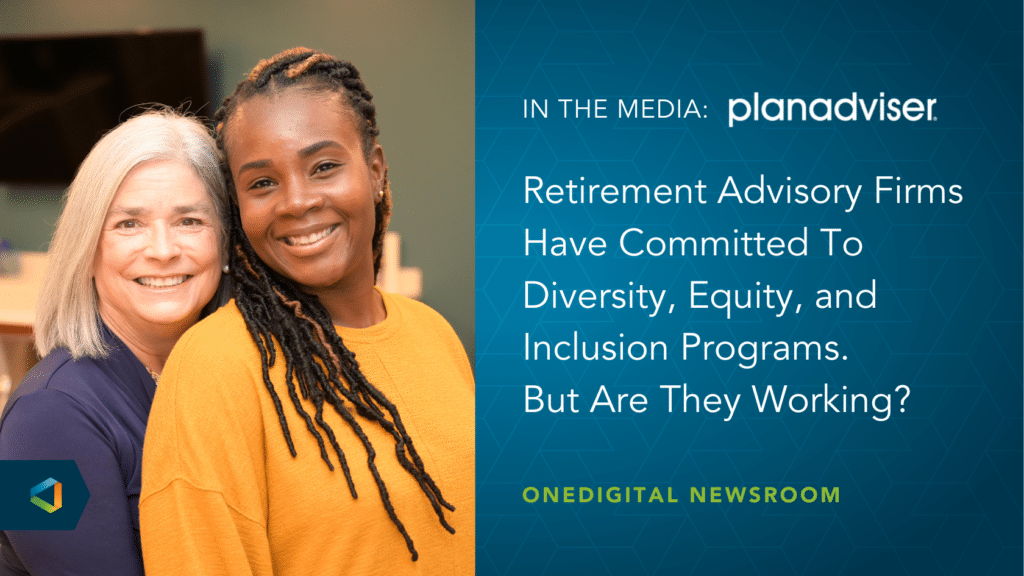Healthy People
Addressing an Aging Workforce
Addressing an Aging Workforce
While COVID has had some far-reaching effects on workforce management, one contributor to the current reshuffle has been on the horizon for decades. Sometimes referred to as a smoldering crisis – the aging population and all the fallout from that should be on everyone’s radar.
Three critical areas to consider:
- The evolution of retirement
- The importance of succession
- The reality of ageism
The headlines over the last few turbulent years have outlined this crisis from a variety of perspectives supported by compelling data. Soaring quit rates, a labor shortage that stems from the convergence of a declining fertility rate and an aging workforce, a decline in immigration, and an increase in wages, to name a few. People are living and working longer, causing ripple effects everywhere. Let’s break this down a bit more…
Retirement Woes: Boomers, Millennials and Undeniable Gaps in Leadership
Mathematically, we are simply not replacing our labor force. To fully understand the dilemma, we need to look at both sides of the equation. What is coming in, the birth rate, and what is going out, the retirement rate. The decline in the birth rate – since about 2000 – is now being profoundly felt. People are living at home longer, getting married later, and having fewer children. As a country, the replacement rates for the US sits at about 1.6, and we know that 2.1 is the magic number for the population to exactly replace itself in a generation.
As we see 10,000+ boomers retire daily, we anticipate the next 5-7 years to see the shift to where the labor force will be mostly millennials – estimates as high as 70% of the workforce will be millennials. The C-Suite is poised to retire in massive numbers. Leaders may be working longer; however, they are in the queue for retirement. The burning question is succession. Is the next generation of leaders groomed and ready to take the reins? Are the discussions happening to ensure that there is a smooth transition? If not, why not?
Succession Planning is Not Just for the Board Room Anymore
COVID contributed here as well, with at least 1.7 million Boomers calling it quits and taking early retirement. There is no indication that this will change. A glance at most C-Suites confirms that the average age is 56, with the CEO average closer to 59.
Take the below steps to start having conversations about succession planning now.
- Be proactive. Open communication is essential – find out what everyone’s plans are.
- Build a strategy to capture and transfer knowledge. This takes time, and the timeline is important.
- Engage stakeholders. It is not just an HR duty to plan for succession. Existing C-Suite members, stakeholders, and other managers need to be part of this process with the goal to make the transition seamless.
- Develop mentoring programs that focus on pairing successors in regular sessions to discuss the nuances of the role. Overlap is ideal.
Filling the Shoes of Boomers is a Landscape Ripe for Discrimination
Be thoughtful when choosing the next generation of leaders. Don’t overlook older workers, veterans, or the disabled…discrimination litigation can be one small step away. The Age Discrimination in Employment Act (ADEA) of 1967 provides protection for workers over the age of 40 – yes, 40!
Make sure your candidate pool reflects your hiring community more than mirroring your current management team. Why is this so important? Diversity of thought and innovation – two key components that exist in successful organizations - come directly from your leadership. So, if you want to grow and be better – you must do better at selecting who will take the organization to the next level.
Be intentional and get buy-in from leadership. Building a legacy requires time and planning.
Age Discrimination is Real
- The average age of the population in the US will be 38.6 by the year 2040. That means about half of the population will be 40 or older and are protected by ADEA.
- 22% of all claims reported to EEOC in 2020 were related to age discrimination. On the hiring front, employers don’t ask, and applicants don’t offer high school or college graduation dates or birth date.
- Combine age with race and gender, and chances of an interview or a job offer drop sharply.
Diversity – Including Age Diversity – is Simply a Good Business Practice
It will be a question of balance as we are positioned to lose a strong contribution to our tax base.
As the scale tips, we will see a higher ratio of elderly to working adults. In the 1960s, there were six people of working age for every retired person. Today, the ratio is about three-to-one. By 2040, it will be about two-to-one.
The benefits of retaining and hiring older workers are clear, in addition to the knowledge, experience, and likely higher loyalty as a result of working for an organization long-term. However, there has also been a rise in 50 to 60-year-olds stepping out of the traditional workforce in favor of a more entrepreneurial gig.
Responsibly Setting up Older Workers to Transition to Retirement
Offering opportunities for growth, learning, leadership, mentorship, and promotion requires planning. Employers need to build a workplace that has policies and practices to support older workers. Employers should provide flexible work options to allow older workers the ability to phase out of the workforce.
There is a financial implication that accompanies retaining older workers. Aside from the obvious executive compensation, companies will need to factor in the cost to provide benefits and offer what is probably the highest level of paid time off benefits. However, employers need to acknowledge the value and skill that a seasoned employee can bring.
COVID has shown that employees are willing to accept less compensation (up to 20% less) to have the flexibility – remote or hybrid work – which will be instrumental in designing the workforce of the future. The next 5-7 years will be marked by a generational shift that will impact how we do business.
Culture Will be Directly Impacted as a New Generation Assumes Key Leadership Roles
It seems important to circle back here on the idea that organizational beliefs shift as current leaders age out. This, we hope, will happen with the stigma on mental health as well as an increased effort to cultivate a true melting pot that encourages diversity of perspective and innovation. It is a golden opportunity for businesses to make changes to instill the future success of their organization and workforce.
For more information to help you prepare for the road ahead, read: How Companies Can Prepare for America’s Demographic Drought.
Share
Related News & Updates

Video
[Video] Casual Friday: Retention at All Ages
10.13.2022



